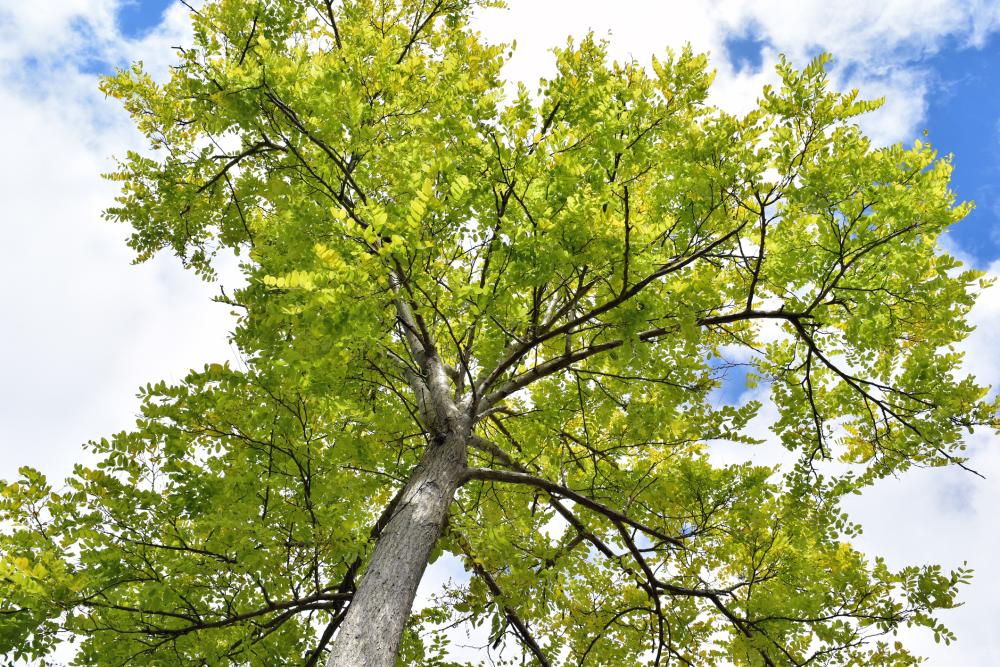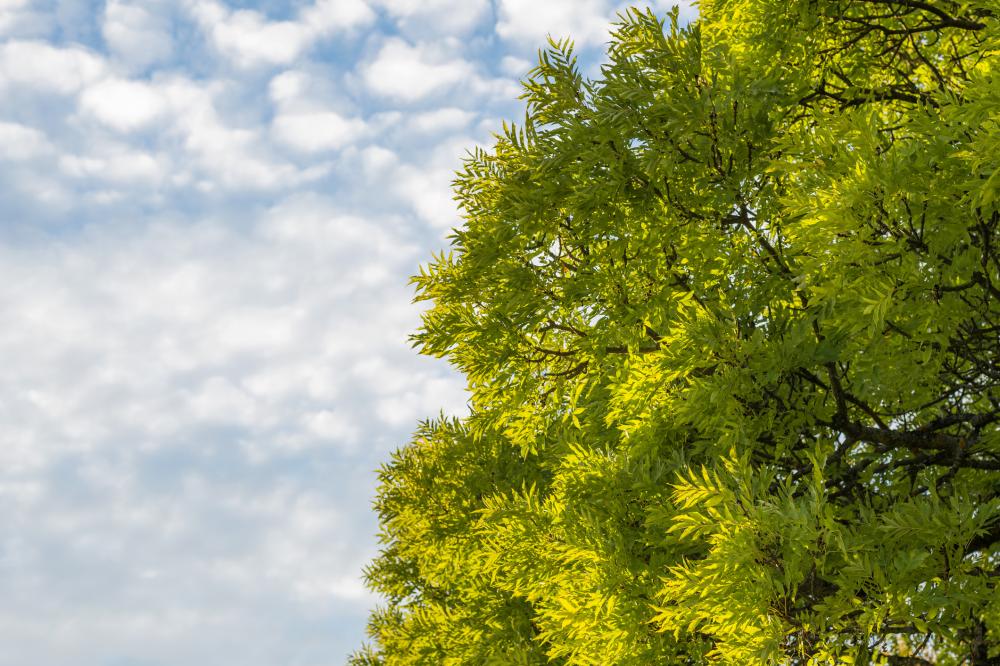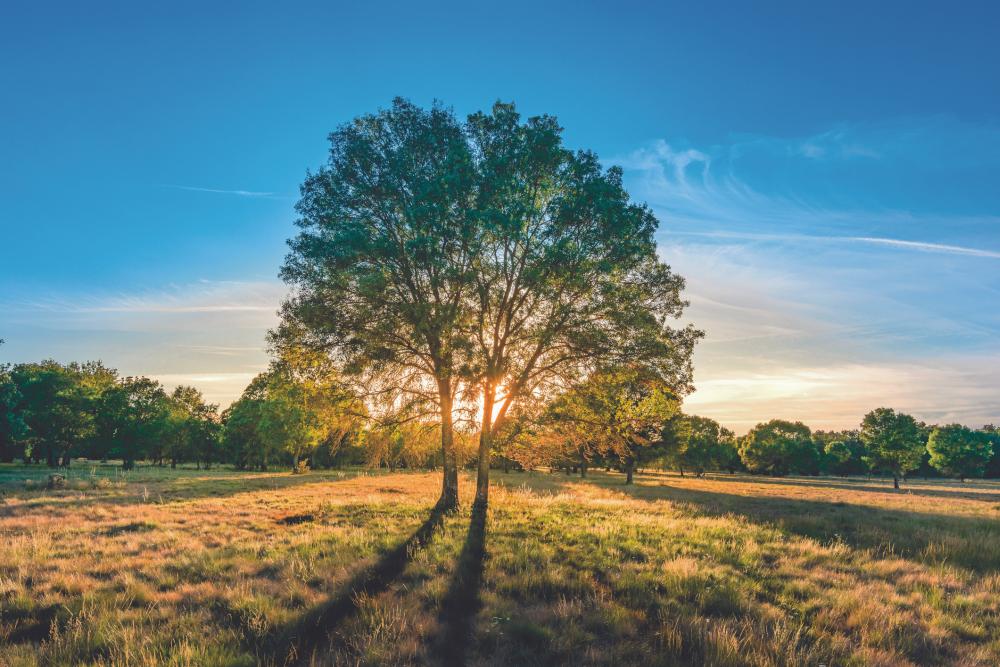Ash Tree Growing Problems and How to Fix Them
The graceful ash tree is a wonderful addition to your garden or lawn. And despite the fact that many ash species are native to North America, growing the ash tree is not without its problems. At the top of the list of these health issues is the emerald ash tree borer. It’s the archenemy of the mighty ash that is threatening many species across the USA and Canada. Whether in a park, an urban meadow, or in a garden, the ash tree is susceptible to the lethal pest.
But other problems loom as well from oozing bark to the bark falling off on its own. Not to mention the various diseases that give the tree a hard time. But despite these many issues, the ash tree remains well worth the work you put into growing it. Read on to find out how to deal with the various ash tree growing problems.
Ash Tree Oozes
When your ash tree oozes sap you have every reason to be concerned. That’s tantamount to someone getting injured and starting bleeding. But with ash, sap comes out in two ways. Either the sap leaks through bacterial infection or it might take the shape of white foam on the bark. It might happen even when the bark looks intact.
Slime flux is caused by bacteria that infect injured trees, festers inside the trunk, and cause sap to leak out. Trees under stress might also fall prone to this disease. All the bacteria need is a wound in the bark and an ill tree. So while the oozing sap might not be a serious problem in itself, it usually implies that the tree itself is not in the best of health.
As the bacteria multiply inside the trunk and feed on the wood, they release carbon dioxide which displaces the sap in the tree and pushes it out to the surface. The sap on the bark forms wet patches that attract more bacteria and insects that feed on the sap, ferment it and release a noxious odor.
How to Fix it
Since bacteria infect an ill or stressed tree with slime flux, then you should check the ash tree and see what is causing that stress. In many cases, drought is the main cause of this stress. Since a healthy tree can fend for itself, by treating the underlying causes of slime flux, the disease will go away on its own. Here are a few tips to fix this problem.
- Don’t let the soil go dry during the summer. The ash tree still needs water even if it’s established.
- Water the tree deeply once every week during the growing season.
- Don’t injure the tree especially during pruning. The bacteria need a wound in the bark to reach the wood.
- Look for signs of scales or aphids. They secrete honeydew, a liquid similar to tree sap.
- Give your tree time to heal on its own.
Ash Tree Bark Shedding
Say what you like about ash tree bark, but it is one of the top features of the species. When the leaves are long gone and the tree stands in its naked splendor, it’s the bark that stands out. Gray, dark, or many shades in between, the fissured trunk cover adds class to the graceful ash tree. But sometimes the bark will fall off the tree with no provocation. What is going on with your ash tree?
Bark shedding is a common problem with ash trees and the causes could be the growing conditions around the tree or it could point to a more serious pest problem. Here are some of those causes.
- Drought: Ash trees prefer to have a constant source of water nearby such as a pond or a stream. When the soil dries out, the tree becomes stressed and loses its bark.
- Weeding: When you weed out invasive plants around the tree, you disturb the soil which puts the tree under stress.
- Pesticide: Using pesticides or fungicides near the tree changes the chemical structure of the soil which causes it to shed off the bark.
- Trenching: Trenching has the same effect on the tree as weeding. It turns up the soil and in the process, some roots might become exposed.
- Pests: The main pest that causes ash bark shedding is the emerald ash borer.
How to Fix it
With a little luck, you’d be able to remove the causes of stress that make the ash tree shed its bark. In most cases, you can easily fix the problem by taking one or more of the following steps.
- Keep the ash tree irrigated especially in the summer when the weather becomes dry. On average, the tree needs between 1 to 2 inches of water a week depending on its size and age.
- Try not to disturb the soil when weeding.
- Watch out for the tree roots when trenching. Cover them with soil as soon as they pop out.
- Use organic pesticides such as neem oil as much as possible to avoid contaminating the soil with chemicals.
Ash Yellows Disease
Ash yellows is a disease that infects different species of ash and can cause a lot of damage. Because the disease shares many of its symptoms with other common plant diseases, it remained undetected until the 1980s.
So far ash yellows has only been diagnosed in ash trees growing in North America. It’s caused by ash yellows phytoplasma and only a lab test will confirm that the tree has the disease. In most cases, you’d chalk off the symptoms to anything from fungal infection to drought.
The symptoms of ash yellows vary but you often would notice that the tree is slowing down and not growing at a usual rate. The leaves too will look smaller and their color a little pale.
After a few years, the branches and twigs of the ash tree will grow in tufts and look like the head of a broom.
How to Fix it
Because it’s hard to diagnose and the first noticeable symptoms will take years to develop, it’s often hard to rescue an ash tree suffering from ash yellows. The tree could succumb to the disease immediately after the first tufts of branches grow or it could take a few more years.
And since insects carry the disease from one tree to the next, it’s best to remove the infected tree as soon as you notice the symptoms. Don’t replace the sick ash with another ash species.
Pruning Ash Tree
Between the bush types, the small tree varieties, and the large towering ashes, you got your hands full when it comes to pruning ash trees. For one thing, you can’t just let the decorative ash tree in the garden grow at will. That could soon develop into an unsightly tree with wild branches waving everywhere. Not to mention that the tree’s growth will suffer from a lack of pruning. Add to that the structure of the ash tree with its opposing branches which could lead to a tilting tree. So how would you go about pruning ash trees without making an ordeal of it?
How to Fix it
As with all complex tasks, breaking them down into small pieces makes them more manageable. So before you set up the ladder and hold your trusty loppers, it pays to stand back and plan your pruning mission ahead.
The first thing is to know when it’s time to prune the ash tree. The best time to prune the tree is when it’s dormant. Late winter is usually an ideal time. But sometimes you might have to remove dead or damaged branches even in the height of the growing season in the summer. In fact, it’s recommended to keep the ash tree clean and tidy all year round. Damaged or diseased branches could cause serious damage to the tree.
When you mark a branch for pruning, start at the underside of the branch and make a cut about a quarter of the way in. Then move to the top of the branch and make a clean cut that goes past the underside cut. When the branch falls off, remove the stump.
Emerald Ash Tree Borer
Of all the pests and diseases that attack the ash tree nothing is as lethal as the emerald ash tree borer. The beetle is one of the most aggressive insects you’d come across. It single-handedly is responsible for putting many ash species in North America in a critical or threatening state. But it’s the green, black, and white ash species that are particularly vulnerable to its devastating attacks. So what are emerald ash tree borers?
While not native to North America, the emerald ash tree borer has somehow found its way to the continent in the last century. The half-an-inch insect has a shimmering emerald green body and makes holes in the ash tree trunk to lay its eggs. When the eggs hatch, the larvae continue to bore into the wood and create long and intricate tunnels. The hollowed-out tree can no longer send nutrition and moisture to its foliage and struggles as a result.
How to Fix it
As usual, it’s easier to protect the ash tree from infection than try to treat it after the emerald ash tree borer has struck. Healthy ash trees are less likely to fall prey to the pest than stressed ones. So water the tree regularly and avoid disturbing the soil around it more than necessary.
Another way to prevent the pests from reaching your tree is to be careful when purchasing and moving firewood. Inspect the firewood before you transport it and make sure you’re not introducing the emerald ash borer to your garden.
Unfortunately, there’s no treatment for the insect once it attacks an ash tree. The best option is to cut down the tree and dispose of it safely.
Ash Flower Gall
Ash flower gall is a less dangerous problem than emerald ash borers. It doesn’t pose any risk to the tree nor impact its growth. Galls are small growths that develop on the branches and twigs of the tree. They usually start as green then turn brown with time.
This is a landscaping headache since the unsightly galls stick out on the tree and stay there throughout the summer. But other than that, the tree stays healthy and shows normal growth rates.
The disease usually infects male ash flowers. Since most ash flowers have no petals, it’s hard to detect the disease at first. Caused by Eriophyid, a tiny mite, the gall takes over the whole flower and turns it into a greenish lump.
How to Fix it
The Eriophyid mite is mostly active during the early spring, right about the time the flowers of the ash first emerge. So, this is the time to apply an insecticide to eliminate the insect. The mite also avoids sunlight and forages on branches in the shade. Make sure your ash tree is getting plenty of the full sun. Pruning to allow sunlight into the inner branches and improve air circulation can also limit the impact and activities of the pest.


